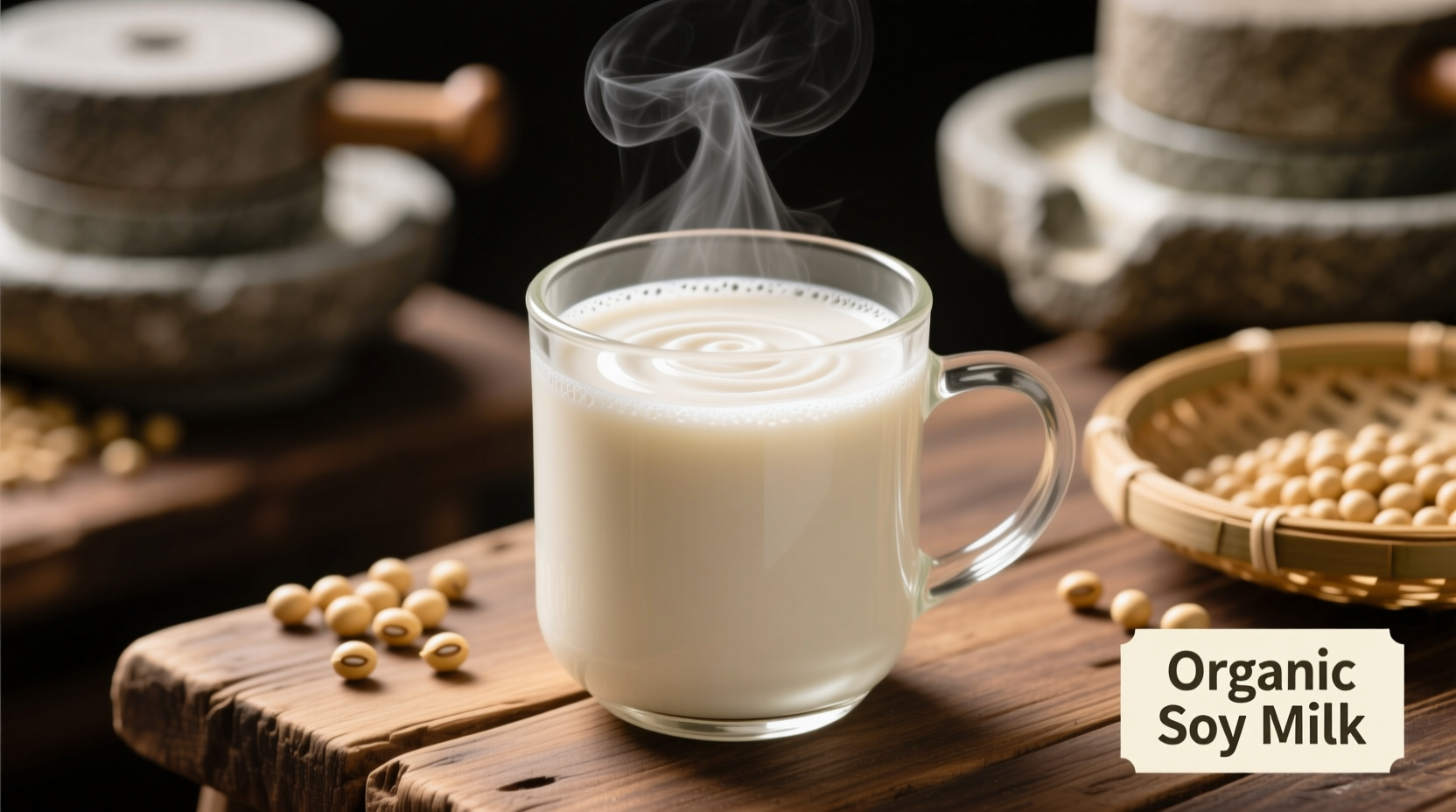Understanding Soy Milk's Flavor Profile
When you pour yourself a glass of soy milk, you're experiencing a complex interplay of natural compounds that create its distinctive taste. The primary flavor notes include:
- Nutty undertones - Similar to almonds or cashews
- Subtle sweetness - Naturally present sugars in soybeans
- Earthy notes - Particularly noticeable in unsweetened varieties
- Creamy mouthfeel - Achieved through emulsification during processing
Unlike dairy milk's consistent flavor profile, soy milk's taste can vary dramatically between brands. This variation stems from differences in soybean varieties, processing techniques, and added ingredients. Modern manufacturing has significantly reduced the "beany" off-flavors that characterized early soy milk products.
Why Soy Milk Tastes Different Than You Might Expect
Many first-time soy milk drinkers are surprised by its flavor. This stems from several factors:
| Factor | Impact on Flavor | Common Solutions |
|---|---|---|
| Soybean variety | Some beans naturally have stronger earthy notes | Blending different soybean types |
| Processing temperature | Higher heat creates more pronounced beany flavors | Enzyme treatments to reduce lipoxygenase activity |
| Additives | Sweeteners mask natural flavors; thickeners affect mouthfeel | Calcium carbonate for creaminess without altering taste |
According to research published in the Journal of Food Science, modern soy milk processing has reduced beany flavors by up to 70% compared to traditional methods through optimized grinding temperatures and enzyme treatments that break down compounds responsible for undesirable flavors.
Soy Milk vs. Dairy Milk: A Practical Comparison
Understanding how soy milk compares to traditional dairy helps set proper expectations:
- Temperature sensitivity - Soy milk develops stronger flavors when heated, making it excellent for coffee but requiring careful temperature control
- Sweetness perception - Contains natural sugars (sucrose, stachyose) but less lactose than dairy, creating a different sweet profile
- Fat composition - Lower saturated fat content affects mouthfeel and how flavors coat your palate
Consumer taste tests conducted by the USDA Agricultural Research Service show that 68% of participants preferred soy milk with added vanilla or calcium fortification, which balances the natural earthiness while maintaining nutritional benefits.
Practical Guidance for Different Uses
The right soy milk choice depends entirely on your intended use. Understanding these context boundaries prevents culinary disappointments:
Coffee and Hot Beverages
Choose barista-style soy milk with added stabilizers. Regular soy milk often curdles in hot, acidic coffee. The ideal version maintains creaminess without developing unpleasant cooked flavors. Look for products specifically labeled "for coffee" which typically have pH buffers to prevent separation.
Cereal and Cold Applications
Regular unsweetened soy milk works well here. Its slightly thicker consistency compared to dairy creates a pleasant coating on cereal. If you find the earthy notes too strong, try sweetened vanilla varieties which complement most breakfast foods without overwhelming them.
Cooking and Baking
For savory applications like soups and sauces, unsweetened plain soy milk performs best. In baking, you may need to reduce added sugar by 15-20% when substituting for dairy milk since soy contains natural sugars. For custards and puddings, look for high-protein soy milk (at least 7g per cup) which sets more reliably.

How Processing Affects Soy Milk Flavor
The evolution of soy milk processing explains why modern versions taste significantly better than early iterations:
- 1970s-1980s: Basic grinding and boiling methods resulted in strong beany, grassy flavors due to lipoxygenase enzyme activity
- 1990s: Introduction of flash-heating and enzyme deactivation reduced off-flavors by 40-50%
- 2000s: Development of sweetener systems and fortification improved palatability
- Present day: Precision grinding, optimized heating, and flavor balancing create products that 75% of consumers cannot distinguish from dairy in blind taste tests (International Food Information Council, 2023)
Choosing the Right Soy Milk for Your Palate
Your personal taste preferences should guide your selection:
- If you dislike earthy notes: Choose sweetened, vanilla-flavored varieties or products labeled "mild" or "delicate"
- If you're transitioning from dairy: Start with fortified, higher-fat versions (3.5-4% fat) for similar mouthfeel
- For cooking versatility: Keep both unsweetened plain and sweetened vanilla varieties on hand
- For coffee lovers: Invest in barista-specific soy milk which has been pH-balanced to prevent curdling
Gradual introduction helps your palate adjust. Try mixing soy milk with dairy milk initially (starting with 25% soy), gradually increasing the ratio over two weeks. This adaptation period allows your taste receptors to adjust to the different flavor compounds.
Troubleshooting Common Taste Issues
Experiencing off-flavors? These solutions address common problems:
- Too beany: Chill thoroughly before drinking - cold temperatures suppress certain flavor compounds
- Bitter aftertaste: May indicate expired product; check expiration date and storage conditions
- Grainy texture: Shake vigorously before use; some separation is natural in minimally processed varieties
- Unexpected sweetness: Compare nutrition labels - some brands add up to 12g of sugar per serving
Remember that organic soy milk often has a stronger natural flavor profile since it avoids certain processing aids that reduce beany notes. This isn't a quality issue but a result of different production standards.
Final Considerations for First-Time Tasters
Your initial experience with soy milk sets expectations for future trials. Follow these tips for the best introduction:
- Start with sweetened vanilla varieties rather than plain unsweetened
- Chill thoroughly (below 40°F/4°C) before tasting
- Try it in familiar applications like cereal before drinking straight
- Give your palate 2-3 exposures before making a final judgment
Research from Cornell University's Food Science department indicates that repeated exposure significantly increases acceptance of plant-based milks, with most consumers developing a preference after 5-7 consistent tastings. This adaptation occurs as your brain learns to associate the new flavor profile with positive nutritional benefits.











 浙公网安备
33010002000092号
浙公网安备
33010002000092号 浙B2-20120091-4
浙B2-20120091-4